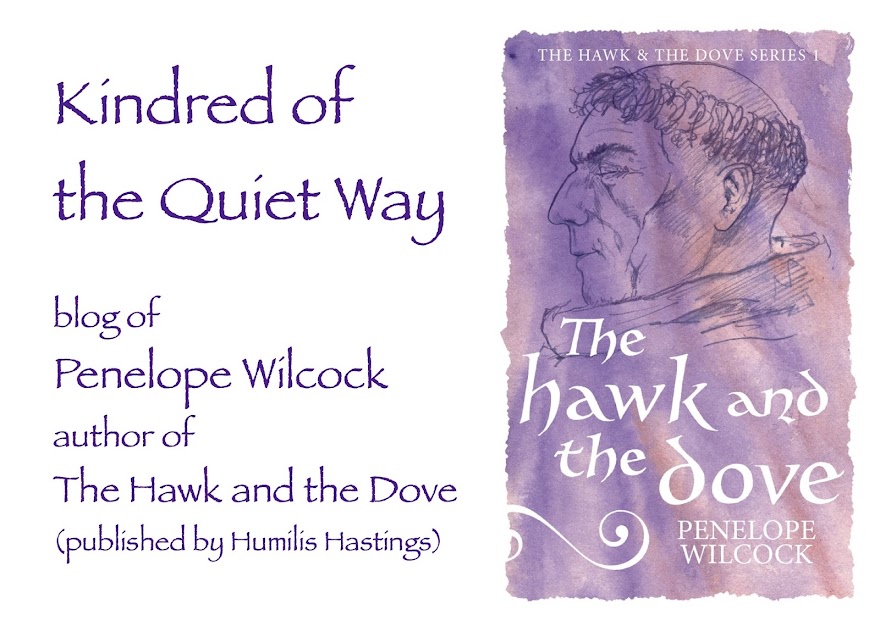At
the age of fifteen, I met Jesus. This is not to say that up until that point my
life had been a sterile desert devoid of all spiritual content. Of course not.
Nor is it to say that until then he was not with me. He was. He is Emmanuel –
he is always with us; he stands at the door of each soul, and knocks. But at
fifteen years old I met him in conscious awareness, and life has never been the
same since. I became his property then, and so I still am.
The
road from that point on has travelled through a changing landscape. For a
while, immersed in Pentecostalist / Housechurch / Baptist / Jesus Freak
culture, my life took on a strongly Evangelical flavor. In those days, small
local Evangelical Christian bookshops could still be found in most places, and
always sold prayer cards with Bible quotations or devotional poetry on them.
One
I loved said this:
For
no reason I can think of, it came back to my mind today. I felt intrigued to
remember how delightful I found it all those years ago. I felt then that it expressed so
well how things are – a shrewd nugget of useful wisdom. I see it differently
now.
Here
is how my 56-year-old mind responds to it.
Line
1:
Lord of the pots and pitikins
Yes,
God is present in every aspect of life – in the mundane chores of everyday just
as much as when we gather for worship or set time aside to read the Bible or
pray. I’m with Brother Lawrence and his Practice of the Presence of God: all ground is Holy Ground; there is nowhere God is not.
Lines
2-4:
Since I have no time to be
A saint by doing lovely things
And vigiling with Thee
This
is where it starts to go wrong.
Here
steals in the tacit implication that the contemplative life is a luxury, not
really work – something only for people who have time on their hands – ladies
of leisure. A mistake actives often make about contemplatives, this is a grave
error. The work of prayer is as taxing and practical as any manual labour.
Further, the two are not mutually exclusive. It’s possible to keep vigil with
God and wash up at the same time.
Lines
5-6:
By watching in the twilight dawn
And storming Heaven’s gates
In
terms of religious debate, this is an old and wily technique: discredit by
facetiousness. It is not stated, but it is insinuated that those whose lives
are dedicated to the pursuit of prayer and meditation have opted for
romanticism, ignoring real work – cooking and housework – in favour of
dilettante and self-indulgent poetic stuff.
Lines
7-8
Make me a saint by getting meals
And washing up the plates.
A
reasonable prayer, and these are holy occupations. But in the context of the
poem as a whole, the closing couplet has a kind of implicit triumphalism:
Pragmatists 1, Romantics nil. Martha 1, Mary nil.
I
don’t like it, when I read it now. It lacks integrity, as a proposition.
Intellectually, it fights dirty.
I
was brought up in a very pragmatic household. The child of a Yorkshire family,
all undemonstrative, busy, prosaic types, hardworking and unsentimental, I grew
up to see productive labour, material security, and hard-nosed practical
realism as pretty much the Holy Grail. My mother’s days started early and
finished late, her every minute filled with gardening, animal husbandry,
housework and cooking. She worked and worked and worked without ceasing. Her
hard work benefited and blessed us all, and I am both humbled by and grateful
for all she did for us.
You
can tell, can’t you? There’s a lurking “but”.
Here
it is. As an adult, passionately, absolutely, I believe in simplicity. I
believe in owning little, having little to do, being as free as possible,
weighed down by neither commitments nor possessions. I believe in being free to think, to respond
to others, to sit and watch and wonder at this beautiful world, to consider
ideas, to pray, to read, to dance and listen to music, to sing and walk and
wander and play.
I accept that a certain amount of housework and washing up and cooking must be done, but I know
for sure that’s not how I want to spend my life. The less I have to curate –
dust, organize, tidy, protect, wash up, find and manage – the better. I like my environment clean, peaceful,
spacious and tidy – but I am not interested in housework.
To
sweep a floor in an uncluttered room is a peaceful occupation. To cut up some
vegetables or make a pot of porridge is a calm, reflective thing to do. To wash
one bowl, one spoon, one cup, in clear water catching the sun’s rays is
beautiful.
But
vacuuming, polishing, baking and all the rest of it – no, thanks. It’s
worthwhile and I have no objection to it, but it’s not for me. And ornaments,
heirlooms, un-used items stored in case they ever come in handy? A thousand
times emphatically: no.


